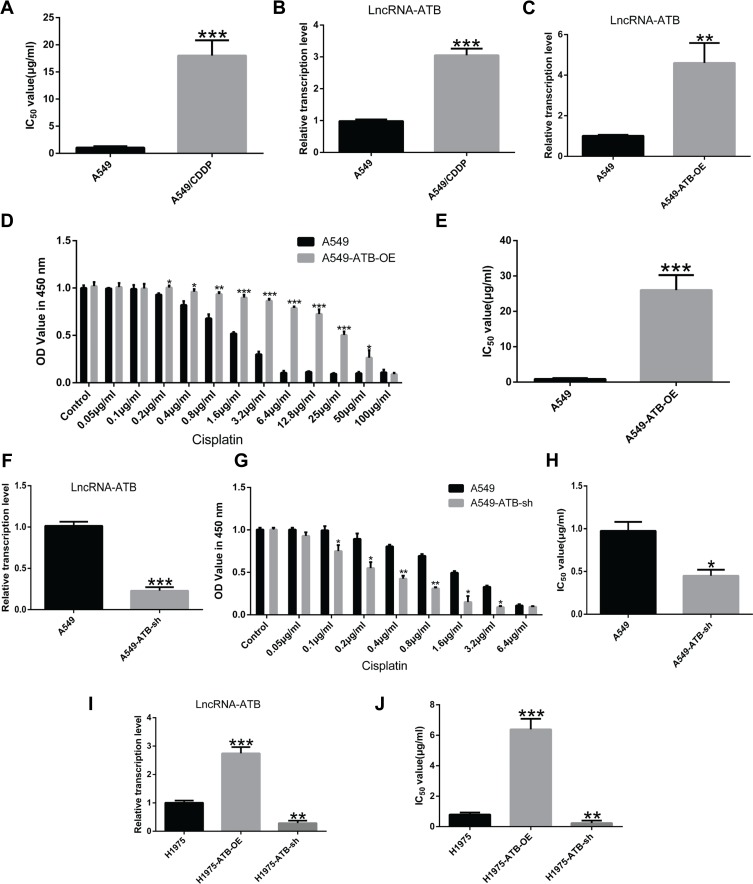Figure 1.
Up-regulation of lncRNA-ATB promotes cisplatin resistance in LUAD cells. (A) The half-maximal inhibitory concentration (IC50) of cisplatin in A549/CDDP cells was significantly greater than in A549 cells. (B) LncRNA-ATB was strikingly elevated in A549/CDDP cells compared with parental A549 cells. (C) Successful construction of A549-ATB-OE cells was validated by RT-qPCR. (D) The effects of different concentrations of cisplatin on proliferation of A549-ATB-OE and A549 cells were detected by CCK-8 assay. (E) IC50 of cisplatin in A549-ATB-OE cells was remarkably higher than that in A549 cells. (F) Successful construction of A549-ATB-sh cells was validated by RT-qPCR. (G) The effects of various concentrations of cisplatin on proliferation of A549-ATB-sh and A549 cells were detected by CCK-8 assay. (H) IC50 of cisplatin in A549-ATB-sh cells was significantly lower than that in A549 cells. (I) Successful construction of H1975-ATB-OE and H1975-ATB-sh cells was validated by RT-qPCR. (J) IC50 of cisplatin in H1975-ATB-OE and H1975-ATB-sh cells. Data are expressed as mean ± SD from three independent experiments. *P<0.05; **P<0.01; ***P<0.001.

